MERIDA ROMAN
Capital of Extremadura and City Heritage of the Humanity

MERIDA ROMAN Capital of Extremadura and City Heritage of the Humanity |
||
|---|---|---|
 |
||
MERIDA ROMAN Of the importance that Throughout history had Emerita Augusta, they attest to the appearance and proportions of the public buildings that we can admire today. Its theatre had a capacity for 6,000 spectators. Next to it, there is the Amphitheatre with about 15,000 seats and a little further away, the Circus with 25,000. These buildings are a clear exponent of the above. Its spectacular civil works, such as the aqueducts of the Miracles and St. Lazarus, the bridges over the Abarregas and Guadiana rivers, the Baths, their religious and political buildings, emerge among the foundations of their houses, turning the old city, into one of the most important archaeological fields in Europe. Other unique monuments are the Temple of Diana or the City Forum. |
||
THE THEATRE He rose on the initiative of the Roman consul Marcus Agrippa, beginning his works in 16 BC, although the aspect he presents, acquired it over almost 300 years of history. Its design faithfully follows the models of the Vitruvian cut era. Its semicircular stand housed about 5,800 spectators, housed in three turas or caveas. In a base and separated from the scene is the orchestra of semicircular layout and radius of 15 m. from where departed the three stands reserved for the citizen authorities of various kinds. The grandstand was accessed through 13 gates conveniently distributed and connected by comfortable tunnels. The most relevant thing about the ensemble is its scene, famous work that stands out for its monumentality and rich hornamentation. On its podium rise two bodies of Corinthian columns about 30 m high, with bases and capitals of white marble and bluish-toned shafts. On each order of columns are located the corresponding architraves, friezes and cornices, all of them beautifully decorated. Conveniently located, statues of emperors, gods and classic characters: such as Ceres, Pluto, Jupiter... |
||
 |
|
|
|
|
 |
||||
| |
|
|
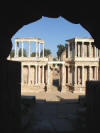 |
||||||
 |
|||||||||
| |
|
|
 |
|
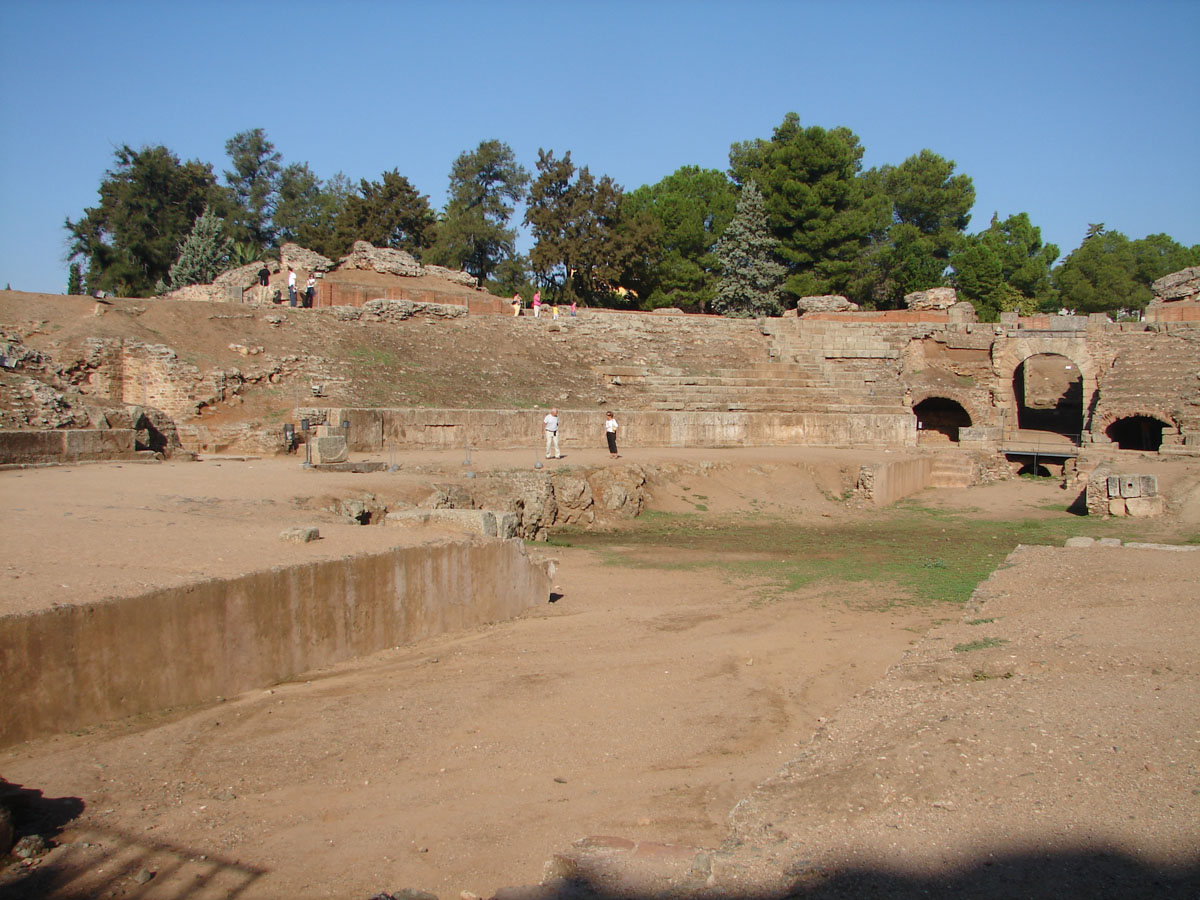 |
|
|
|
|
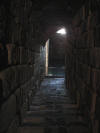 |
|
|
 |
|
|
|
|||
 |
|
 |
 |
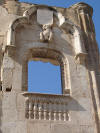 |
 |
||||
 |
 |
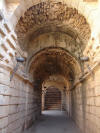 |
 |
 |
 |
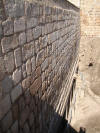 |
|||
ROMANO AMPHITHEATRE It was built a few years after the Theatre and is located to the west, forming part of an extraordinary and unique ensemble that certainly cannot be observed elsewhere in the Iberian Peninsula. It is an elliptical plant copndestruction, with axes of 126 m. and 102 m. Its structure was originally adapted to the orography of the tereno that could serve as the basis for the construction of its stands, using concrete factory, granite ashlars, and brick. It could hold up to 15,000 spectators, a figure that gives an idea of its monumentability and importance of the city of Merida. |
 |
 |
 |
|||
 |
|||||
 |
 |
||||
THE FORUM AND THE TEMPLE OF DIANA The Roman Forum corresponded with the heart of the city, being the center of its political, religious, cultural and commercial life. Given the import of the remains found in its environment, it is believed that possibly its usefulness or destination transcended the local scope. Its perimeter was composed of walls where a series of niches were housed where different gods sculptures, myths and distinguished public figures were located, all related to the historical moment of its construction. The temple of Diana is a contemporary of the foundation in the first century BC, during the reign of Emperor Augustus, it is one of the most outstanding civil buildings of the early city. It is rectangular plant surrounded by slender colonnades, which in portico is presided over by a double row of them, under a pediment with a half-point arch. the columns were originally lined with a striking red stucus. |
 |
 |
AQUEDUCTS OF THE MILAGROS AND SAN LAZARO According to researchers and archaeological explorations, Merida had at least four aqueducts that supplied the significant flow of water that its inhabitants needed. Although they may not coincide at the time of use. In the city of Augusta Emérita two formulas were used for the supply of water. For this purpose, reservoirs were built and springs were channeled. The unevenness of the land was saved by these structures that flowed the water to towers or reservoirs, from where the water was distributed to the city. The most famous and spectacular is Los Milagros. It originated from the Roman reservoir of Proserpina and its pillars and arches reach a height of twenty-seven meters on the bed of the Albarregas river. Bricks and granite blocks were used to do so, reaching a length of 840 m. The one of San Lázaro, barely has a small part, of the 4 kms. which comprised its enormous structure. The pipeline began north of the city, in the place of "Las Tomas" and from there the waters of several springs were collected. Today, we can only observe three of its pillars, with a height of about 15 meters, meager remains of a length of one and a half kilometers. |
 |
|||
 |
 |
||
BRIDGES ABOUT THE GUAIANA AND THE ABARREGAS Emerita Augusta was founded in the center of an important communications network to the west of the peninsula, sheltered on the eastern bank of the Guadiana River that linked it (and separated) from the rest of La Lusitania. To strengthen and facilitate this important step, this huge stone bridge was erected. The aspect it offers today is not the original, because through the times (and because of frequent avenues of the river and war events) it underwent numerous interventions, which were modifying its different constructive elements. He was born parallel to the founding of the city, at the end of the 1st century BC. From the original work it preserves the arches of its ends. Its original structure consisted of two sections of arches, separated by a huge tajamar destroyed by a large flood and in the seventeenth century. This element was replaced by five new arches that seem to give unity to the whole work. The bridge currently measures about 800 m. in length and has a height above the channel of about 12 m. Today it is composed of sixty arches and several reliefs in the area where the current of the river is greater. On the bridge over the Albarregas River (a tributary of the Guadiana) converged with the main road of the city called kardo maxim, other arteries that surrounded the city. From this point, the road was started that was heading towards Astorga, now known as Via de la Plata. The bridge is composed of four half-point arches with dovelas of padded ashlars. Its length is one hundred and forty-five meters and its width of eight meters. |
 |
 |
 |
|
 |
 |
||
OTHER MONUMENTS The boundaries of the ancient city constitute a continuous and endless archaeological field. Any work or new construction safely offers remains of the rich civilization that founded the city of Merida. Walls and fortifications, temples, baths, arches, noble houses and roads. under the medieval city and the nineteenth century remains asleep Emeritus Augusta to the patient waiting to rise from its old ruins. |
 |
 |
||
 |
 |
 |
|
NATIONAL MUSEUM OF ROMAN ART An original and exclusive building, work of the architect of international reputation Rafael Moneo receives the important mas collection of Roman art of Spain. It is nailed in the main archaeological zone of Merida, close to the theatre and amphitheatre and very nearby of the own forum of the imperial city. His collection distributes in several some plants of which they allow very original angles of vision of the pieces exposed to levels top or low. An excellent setting and lighting turn his gathered one in relaxed and pleasantly. Sculptures, inscriptions, funeral monuments, columns, shafts, capitals, mosaics, fresh air, jewels and apparels. The wide and rich one subject matters, which he speaks eloquently about the brilliance reached for Emeritus August in the history of the Roman Empire. In his structure, they find integrated opposing or existing elements in the lot used for his construction, since it is one of the routes or causeways that were crossing the metropolis. The only complex that deserves undoubtedly some arrested visit, which didactic tour is supported for diverse average, arranged in varied languages. |
| |
 |
|
 |
|
 |
|
|||
 |
 |
 |
 |
 |
 |
||||
 |
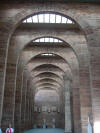 |
 |
|||||||
Ver mapa más grande |
http://www.merida.es www.consorciomerida.org/ Photographies property of the author |
| MERIDA | CITIES PATRIMONY OF THE HUMANITY | natural park of cornalvo | BADAJOZ | ENTER |